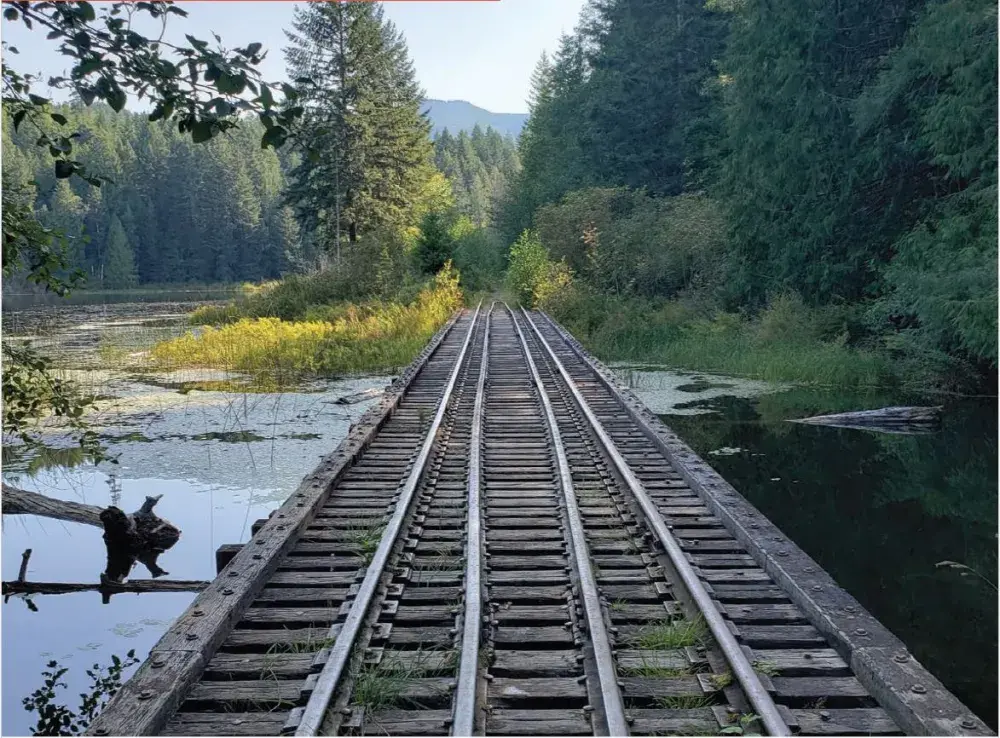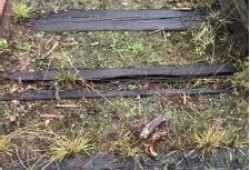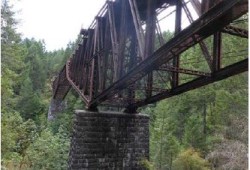A push is underway to restore Vancouver Island’s railway, with a call for the federal government to provide funding to a partnership that includes two Nuu-chah-nulth nations.
On Feb. 7 Cowichan-Malahat-Langford MP Alistair MacGregor presented a petition to the House of Commons with 7,610 signatures in support of bringing back passenger and freight railway service to Vancouver Island. The petition asks the feds to create a $1 billion fund to guarantee financing for the Island Corridor Foundation, a collective of several regional districts and First Nations along the route that owns the railway. Formed in 2003 to preserve what remained of the Equimalt & Nanaimo Railway, the ICF incudes the Alberni-Clayoquot Regional District and the Hupacasaht and Tseshaht First Nations.
Started by Victoria resident Warren Skaalrud, the petition notes that a railway will be needed when Vancouver Island is estimated to reach 1 million residents in 2030.
“Expanding the congested highway arteries on Vancouver Island would cost well in excess of $1 billion and would have high opposition risks from First Nations and citizens of Vancouver Island as such proposals have in the past,” stated the petition.
The document also notes the need for an alternate land passage to Port Alberni and the Island’s west coast communities. This became painfully apparent last summer, when a forest fire shut down Highway 4 at Cameron Lake for much of the season. Tourism-reliant operations in Tofino lost as much as 80 per cent of business, suffering an estimated $50 million in lost revenue.
The shutdown prompted several Nuu-chah-nulth First Nations as well as the ACRD, District of Ucluelet and Nuu-chah-nulth Tribal Council to send a letter to Premier David Eby, calling for the government to “create an official alternate access road to the west coast.”
“First Nations and the ACRD in Port Alberni are both demanding a second route to ensure supplies, products, and people can move when Highway 4 is blocked,” noted the recent petition to restore railway service.
Originally built in 1886, the Esquimalt & Nanaimo Railway eventually stretched from Victoria to Courtney, with a line connecting Parksville to Port Alberni. This enabled European settlement across Vancouver Island, but after a century of operations, freight was in decline, while the automobile had established its role as the main source of transportation for Vancouver Island residents. Passenger service to Port Alberni ceased in 1953, followed by the end of freight shipments to the valley a half century later. In 1979 Via Rail took over passenger service between Courtenay and Victoria, which ended in 2011 due to declining track safety.
Now only the railway within a 16-kilometre radius of the Nanaimo harbour is being used to move freight, operated by the Southern Rainway of Vancouver Island.
According to a feasibility study commissioned by the province in 2020, 45 per cent – or an estimated 180,000 of the line’s railway ties - are “considered defective”. Parts of the railway, particularly the section that extends to Port Alberni, are overgrown with vegetation that would need clearing for service to be restored. On the Port Alberni extension alone bridge repairs were estimated to cost $34.7 million, with work needed on the 13 timber structures currently in place. The 2020 study estimated a full restoration of reliable freight and passenger service to cost over $700 million.
Despite this daunting cost, last year the B.C. Ministry of Transportation and Infrastructure gave a sign of serious consideration towards railway restoration. In March the ministry granted $18 million to the five regional districts and 14 First Nations along the route to develop plans for the line.
During a past meeting of the Alberni-Clayoquot Regional District, ACRD Chair John Jack noted that the railway would bring socio-economic benefits for people throughout the region.
“From an economic standpoint, access to reliable transportation is the most important factor in people escaping poverty,” said Jack during the meeting, which was held July 27, 2022. “Child benefits, child tax benefits, these things all matter - but if you can’t get to work, if you can’t get to your appointments, if you can’t get to your appointments to heal your mind or your soul, you can’t escape the poverty track. This is going to free up space for people to be able to do that.”
Besides the cost of repairing and clearing the railway route, additional resources are needed to “reconcile and resolve long-standing First Nations’ concerns with certain sections of the Island corridor,” stated the petition.
An example of what could lie ahead can be found in the case of the Nanoose First Nation, which fought in court to get its land north of Nanaimo returned from the railway last year.
According to the House of Commons’ petition procedure, a formal response from the government is due 45 days after the document was presented in Parliament.









